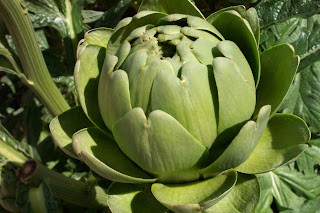

I hammered those stakes into the center of the bed, then used twine and string to rope around the middle part of the leaning artichoke plants, pulling the string tight to force the plants back into the bed and back into a more upright position, before tying off that string on the posts.
It worked wonders. It really did. And then, and only then, did I discover that I had nailed one of those posts straight into the drip line buried four inches below the soil line. So, not only did I save my artichoke plants, I created a new fountain!
DOH! Another trip back to the man's toy store for new drip hoses, connectors, you name it....





